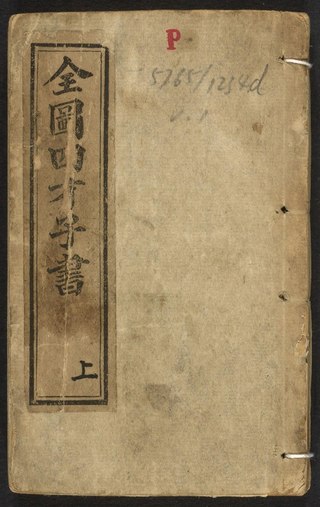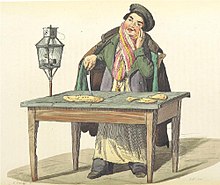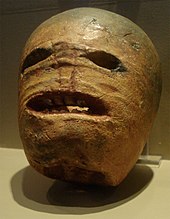
Chakras are various focal points used in a variety of ancient meditation practices, collectively denominated as Tantra, or the esoteric or inner traditions of Hinduism and Buddhism.
Hinduism is an Indian religion or dharma, a religious and universal order or way of life by which followers abide. The word Hindu is an exonym, and while Hinduism has been called the oldest religion in the world, it has also been described as sanātana dharma, a modern usage, based on the belief that its origins lie beyond human history, as revealed in the Hindu texts. Another endonym for Hinduism is Vaidika dharma.

Karma is a concept of action, work, or deed, and its effect or consequences. In Indian religions, the term more specifically refers to a principle of cause and effect, often descriptively called the principle of karma, wherein individuals' intent and actions (cause) influence their future (effect): Good intent and good deeds contribute to good karma and happier rebirths, while bad intent and bad deeds contribute to bad karma and bad rebirths. In some scriptures, however, there is no link between rebirth and karma. Karma is often misunderstood as fate, destiny, or predetermination.
The following outline is provided as an overview of and topical guide to Hinduism:

A mantra or mantram is a sacred utterance, a numinous sound, a syllable, word or phonemes, or group of words believed by practitioners to have religious, magical or spiritual powers. Some mantras have a syntactic structure and a literal meaning, while others do not.

Colonel Henry Steel Olcott was an American military officer, journalist, lawyer, Freemason and the co-founder and first president of the Theosophical Society.

A jack-o'-lantern is a carved lantern, most commonly made from a pumpkin, or formerly a root vegetable such as a mangelwurzel, rutabaga or turnip. Jack-o'-lanterns are associated with the Halloween holiday. Its name comes from the phenomenon of strange lights flickering over peat bogs, called jack-o'-lanterns. It is suggested that the name also has ties to the Irish legend of Stingy Jack, a drunkard who bargains with Satan and is doomed to roam the Earth with only a hollowed turnip to light his way.

Hinduism in Southeast Asia had a profound impact on the region's cultural development and its history. As the Indic scripts were introduced from India, people of Southeast Asia entered the historical period by producing their earliest inscriptions around the 1st to 5th century CE. Today, Hindus in Southeast Asia are mainly Overseas Indians and Balinese. There are also Javanese and Balamon Cham minority in Cambodia and south central Vietnam who also practice Hinduism.

Indian philosophy consists of philosophical traditions of the Indian subcontinent. A traditional Hindu classification divides āstika and nāstika schools of philosophy, depending on one of three alternate criteria: whether it believes the Vedas as a valid source of knowledge; whether the school believes in the premises of Brahman and Atman; and whether the school believes in afterlife and Devas.
Swami Agehananda Bharati was the monastic name of Leopold Fischer, professor of anthropology at Syracuse University for over 30 years. He was an academic Sanskritist, a writer on religious subjects, and a Hindu monk in the Dasanami Sannyasi order.

Hinduism is currently practiced by a minority of residents of China. The religion itself has a very limited presence in modern mainland China, but archaeological evidence suggests a significant presence of Hinduism in different provinces of medieval China. Hindu influences were also absorbed in to Buddhism and got mixed with Chinese mythology over its history. Practices originating in the Vedic tradition of ancient India such as yoga and meditation are also popular in China.

The Vivekachudamani is a philosophical treatise within the Advaita Vedanta tradition of Hinduism, traditionally attributed to the Vedāntic philosopher Adi Shankara, though this attribution has been questioned and mostly rejected by scholarship. It is in the form of a poem in the Shardula Vikridita metre.
Neotantra, navatantra, or tantric sexuality is a Western new religious movement influenced by the Eastern esoteric spiritual traditions of Tantra. Rooted in elements of Hindu and Buddhist tantras, neotantra blends New Age interpretations with modern Western perspectives, often emphasizing the sexual aspects of these ancient traditions. While some proponents reference traditional texts and principles, many utilize tantra as a broader term encompassing sacred sexuality, occasionally incorporating unconventional practices. However, neotantra does not always adhere to the complete range of Indian tantric practices, particularly the reliance on a guru.

Theosophical teachings have borrowed some concepts and terms from Buddhism. Some theosophists like Helena Blavatsky, Helena Roerich and Henry Steel Olcott also became Buddhists. Henry Steel Olcott helped shape the design of the Buddhist flag. Tibetan Buddhism was popularised in the West at first mainly by Theosophists including Evans-Wentz and Alexandra David-Neel.

Buddhism and Hinduism have common origins in the culture of Ancient India. Buddhism arose in the Gangetic plains of Eastern India in the 5th century BCE during the Second Urbanisation. Hinduism developed as a fusion or synthesis of practices and ideas from the ancient Vedic religion and elements and deities from other local Indian traditions. This Hindu synthesis emerged after the Vedic period, between 500-200 BCE and c. 300 CE, in or after the period of the second urbanisation, and during the early classical period of Hinduism, when the Epics and the first Puranas were composed.

Indra's Net: Defending Hinduism's Philosophical Unity is a 2014 book by Rajiv Malhotra, an Indian-American author, philanthropist and public speaker, published by HarperCollins.
Sanātana Dharma is an alternative term used by some Hindus to refer to Hinduism instead of the mainstream term Hindu Dharm. The term is found in Sanskrit and other Indian languages. It is generally used to signify a more traditional, pre-reform outlook of Hinduism. It was revived recently by Hindutva politics.

Caizi jiaren is a genre of Chinese fiction typically involving a romance between a young scholar and a beautiful girl. They were highly popular during the late Ming dynasty and early Qing dynasty.

Hinduism is regarded by modern Theosophy as one of the main sources of "esoteric wisdom" of the East. The Theosophical Society was created in a hope that Asian philosophical-religious ideas "could be integrated into a grand religious synthesis." Prof. Antoine Faivre wrote that "by its content and its inspiration" the Theosophical Society is greatly dependent on Eastern traditions, "especially Hindu; in this, it well reflects the cultural climate in which it was born." A Russian Indologist Alexander Senkevich noted that the concept of Helena Blavatsky's Theosophy was based on Hinduism. According to Encyclopedia of Hinduism, "Theosophy is basically a Western esoteric teaching, but it resonated with Hinduism at a variety of points."













